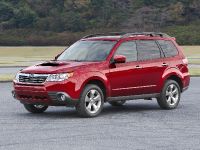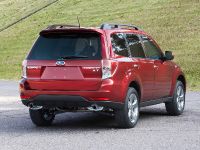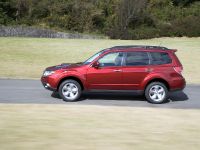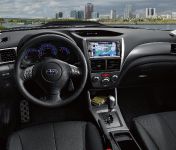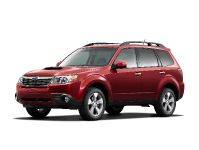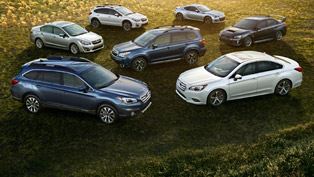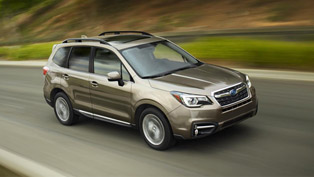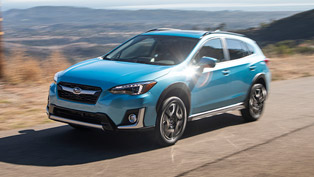Subaru Forester Given Top Rating in IIHS Roof Strength Test
The all-new Subaru Forester was given the top rating of 'Good' in the Insurance Institute for Highway Safety's new roof strength rating system. Designed to help consumers pick vehicles that will help protect them in rollover crashes, twelve small SUVs were tested with only four receiving a 'good' rating.
"It's not surprising that the Forester earned a good rating in our new roof strength test," said Institute president Adrian Lund. "Subaru was one the first automakers to ace our demanding front and side impact tests as well."
"The all-new Subaru Forester continues to deliver the highest levels of safety as evidenced by this new IIHS test," said Tom Doll, chief operating officer for Subaru of America, Inc. "Safety is an important part of our brand promise and we at Subaru are proud of the renowned performance of our vehicles in crash testing as well as real-life accident conditions."
Institute research indicates that roofs have gotten stronger during the past few years. Part of the reason is that manufacturers have made structural improvements to earn better front and side ratings in Institute crash tests. Strong A and B pillars help prevent intrusion in these types of crashes and also help hold up the roof.
More than 10,000 people a year are killed in rollovers. When vehicles roll, their roofs hit the ground, deform, and crush. Stronger roofs crush less, reducing the risk that people will be injured by contact with the roof itself. Stronger roofs also can prevent occupants, especially those who aren't using safety belts, from being ejected through windows, windshields, or doors that have broken or opened because the roof has deformed. Roofs that don't collapse help keep people inside vehicles as they roll. More information on the results can be found at www.iihs.org.
